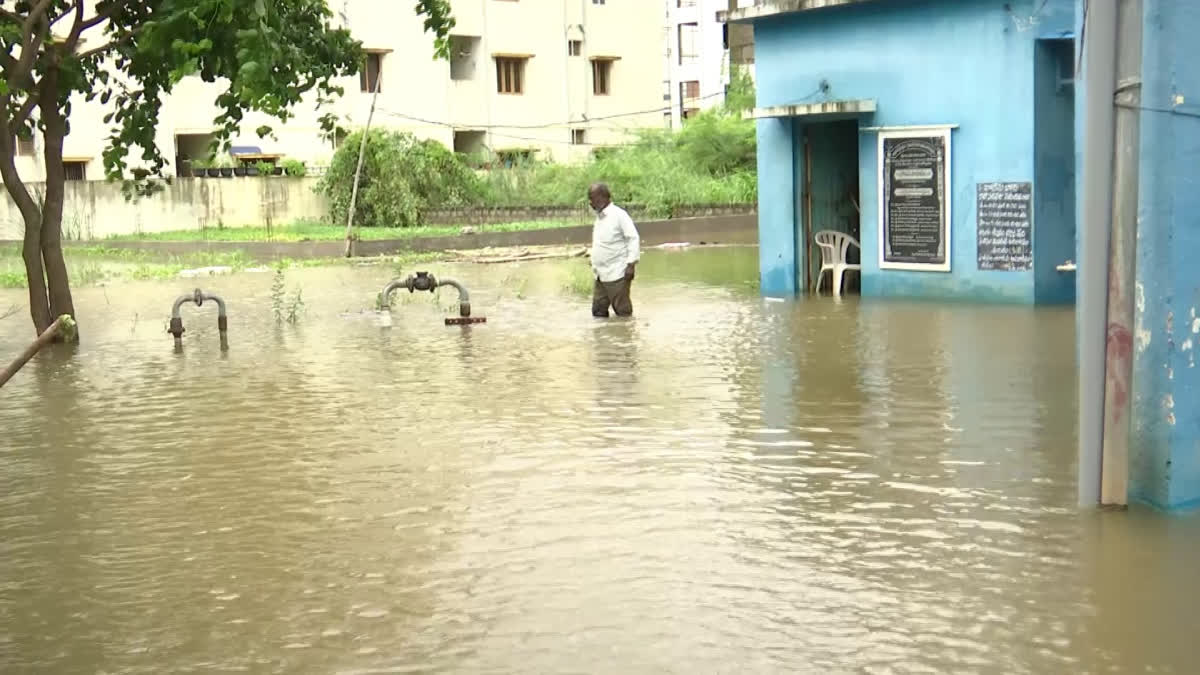Vijayawada (Andhra Pradesh):June 28, July 15, 19, August 3, 29, September 5, 13, 23. What are these dates? These were the days when a low pressure was created in the Bay of Bengal.
If we look at the records of a few years, low pressures have scared the East Coast eight times till September this year. Scientists say that this year's Southwest Monsoon is proof that the oceans are warming up due to climate change and global warming, and abnormal conditions are occurring in rainfall.
Although depressions are common in the Bay of Bengal during the Monsoon, their increase in number, rapid formation, intensification, turning into cyclones and rains are being analysed as 'unusual'.
The number of depressions in the Bay of Bengal and their intensity are increasing. The heavy rain in the coastal region, the central and northern India is affecting a large number of the population. The low pressure in the Bay of Bengal led to heavy rains, which caused recent floods in Vijayawada and Khammam areas.
Scientists say that the influence of La Niño helps in the formation of low pressure in the Bay of Bengal and cyclones forming in the Western Pacific Ocean are weakening as they travel over East and Southeast Asian countries like Vietnam, Cambodia and Thailand. They are again intensifying in the Bay of Bengal. With this, eight low pressures have already formed in this season and five of them became air cannons and had a severe impact on Andhra Pradesh and Telangana.
Due to global warming, sea surface temperatures (SST) are increasing and low pressures are forming frequently. The intensity increases as they approach the coast. With the arrival of weekly low pressure, the moisture content of the soil is increasing. Due to this, the low pressure did not weaken even if it crossed the sea coast and moved over the land. Recently, the air masses formed in the Bay of Bengal have travelled to the western and northwestern parts of the country like Gujarat and Rajasthan due to the humid weather. As a result, heavy rains lashed Odisha, Jharkhand, Telangana, Madhya Pradesh and Gujarat.
Although the cyclone itself has stopped, the weather indicators are clear that their intensity has increased. In the past, if cyclones formed near the Andaman Islands, they would move west towards Nellore and northwest towards Kolkata. Their course has been changing over the years.
Scientists warn that due to global warming and coastal erosion, the frequency of hurricanes may increase in the future. It is expected that cyclones may occur more in the seasons of April-July and October-November, especially the beginning of the rainy season in June and July.
"Under the influence of cyclones formed in the Pacific Ocean, one depression forms in the Bay of Bengal as soon as it crosses the coast. Similar rains occurred in the past when there were 'above normal' conditions. As a result of this, the monsoons have become active and rains have been abundant recently. This time there is a possibility of more rains in the state as the departure of monsoon is delayed," Dr KJ Ramesh, retired Director General of India Meteorological Department (IMD).
"Predicting the course of hurricanes is becoming more difficult. Cyclone Yagi, which recently formed in the South China Sea, has strengthened into a cyclone in the Bay of Bengal near Myanmar. As a result of this heavy rains fell in North India. It is beyond expectations. At present, Japan, India and the United States are monitoring the situation in the Pacific, Indian and Atlantic oceans. These countries should jointly investigate these. With international cooperation, mutual information sharing, and modern research, there is an opportunity to make accurate climate forecasts," said Dr. Tallapragada Vijay, Senior Meteorologist, in the USA.
